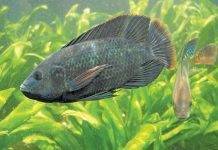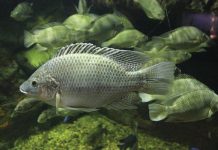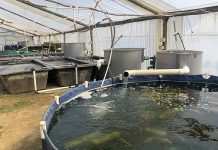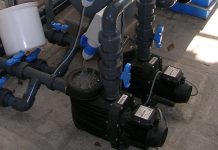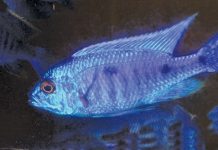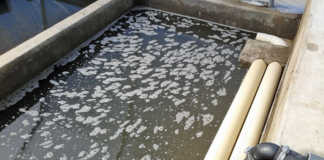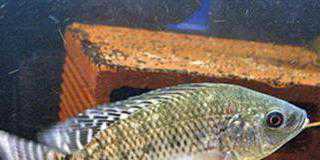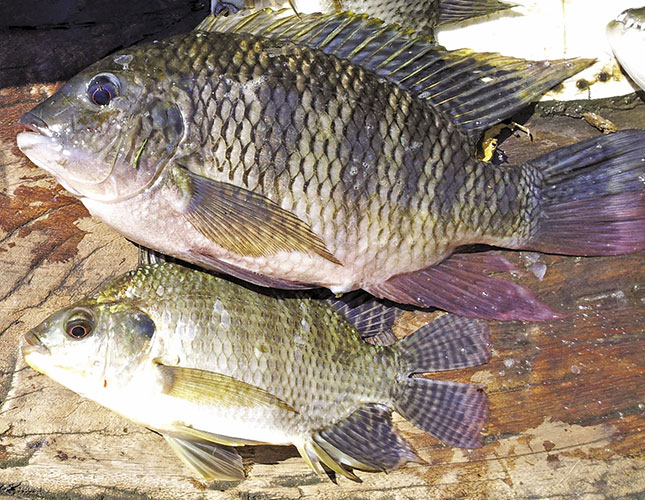
Since the 1980s, tilapia strain development has steadily improved the original species’ performance under culture conditions. This is a long-term task: it took more than a decade of research in the Philippines to develop the first improved strain, GIFT 1 (genetically improved farmed tilapia), and research continues.
Since the 1990s, most research has been carried out on Nile tilapia (Oreochromis niloticus), and several strains of both wild colour and red fish have been developed. This is not to say that other species such as the blue tilapia (O. aureus), the three-spotted tilapia (O. andersonii) and the Mozambique tilapia (O. mossambicus) should be ignored as having future aquaculture potential, but for now Nile tilapia is regarded as the species of choice for improvement.
Slow progress
The Department of Environmental Affairs and the Department of Agriculture, Forestry and Fisheries have gradually, and reluctantly, accepted Nile tilapia for aquaculture. Only recently have some permits been issued, and the process is long, complicated and seemingly uncoordinated. Government policy on hatcheries is as yet not clear, and this is one reason that warm-water aquaculture in South Africa is well behind most other countries. Locally improved so-called strains are available and have been used with some success, but they vary widely in performance – and some are not strains at all.
Years of crossing
A commercial strain does not arise from one or two quick breedings. The Rivendell Hatchery ‘Red 5’ strain, for example, is as a result of five separate crosses and subsequent back-crosses over 15 years, between red Mozambique tilapia and one of the best-researched wild strains of this species.
But while the culture performance of this strain is superior to that of many other O. mossambicus available, it does not compare with the best in the world, and should thus be regarded as a reasonable alternative for the moment, so long as the best Nile tilapia strains remain inaccessible.
Other locally ‘developed’ strains of tilapia on the Internet should be viewed with caution if the developmental process – including the numbers of fish used and their origin – are not documented. It is easy to claim to have developed a strain, but it takes more than a pair of big fish to make one; you need time, expertise and many large grow-out tanks to compare the performance of offspring.
When I hear of people claiming to have bred from ‘the best brood-stock because they were so large’, I wonder if they know that fish grow throughout their lives, and that their brood fish were probably just old, and not special at all.
It takes considerable research into a species’ or strain’s life history to assess potential culture performance. Tilapia stock improvement centres are found mainly in Asia, such as the Asian Institute of Technology, Namsai Farms and Manit Farms. The universities of Stirling and Swansea in the UK and companies such as Fishgen are responsible for development in stock improvement in producing reliable strains.
Nicholas James is an ichthyologist and hatchery owner.

